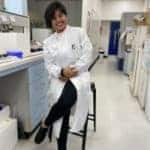-
Asked by anon-372765 on 15 Nov 2023. This question was also asked by anon-372766.
-
Michael Schubert answered on 15 Nov 2023:
I probably won’t clone anything myself, but if I could choose anything to clone, I think I would choose some of the plant and animal species that are critically endangered, so that we could make sure they don’t go extinct. You can find a list of those species here, along with some interesting information about them:
https://www.iucnredlist.org/I love animals that are less cute or get less attention than others, so I would probably start by cloning animals like rays, hagfish, lizards, and maybe even lampreys!
-
-
Sophie Shaw answered on 16 Nov 2023:
Now that I work on a computer, I don’t do any lab work anymore, so no more cloning. But in the past, I’ve cloned bacteria and yeast – it’s not as hard to do as you’d think. We actually did it for a practical at university during my degree.
-
Martin Johnsson answered on 17 Nov 2023:
From my perspective–I work in farm and companion animal genetics–cloning isn’t really that useful. There are people who clone their horses, dogs and so on. For example, if they have a stallion that was really good, a horse breeder might want to clone that stallion to be able to propagate that stallion’s DNA to more even more offspring. In my view, traditional breeding is usually a better option.
-
Martin Minarik answered on 18 Nov 2023:
I used to clone parts of fish genes using bacterial cloning a lot. It’s really useful if you want them to produce some interesting bit of DNA from other organisms for you. First you isolate the DNA bit you’re interested in – from a fish in my case. Then you make many copies of it which you then stick into a circle made out of DNA called a plasmid, which you can buy. You can then insert it into a sample of bacteria. The plasmid contains a gene for antibiotics resistance, so when you grow the bacteria on a Petri dish covered with antibiotics, only the bacteria that have taken up the plasmid will survive and produce clones of identical individuals which you then see as spots on the dish. There’s another molecular trick involved that makes the clones that contain your piece of DNA within the plasmid stay white, while those with an “empty” plasmid turn blue. You then pick one or a few of the white clonal colonies, make them grow in a separate tube, and they’ll make copies of your correct plasmid for you, which contains the chosen bit of DNA that you can then use in your research. I find that really fun to do, but actually don’t do it anymore that much as it became cheaper and faster to just order synthetic bits of DNA for my research from a company 😀
-
Debbie Guest answered on 27 Nov 2023:
I don’t work on cloning myself, but I know other people are working on cloning endangered species to help breeding programmes
Related Questions
Latest Questions
-
what was the most advancing breakthrough
-
Is there life on other planets? If so, is it in any way similar to human life (1 Comment)
-
can you clone a person
-
What are the worst possible things that could go wrong?
-
would you like to bring extinct animals back to life
-
what is your favourite genetic mutation?
-
Do you aspire to research the other contributors to genetic diseases and dysregulations (eg stress)?
-
What drew you to studying nematodes specifically?
-
what is your yearly income
-
What do you do in your spare time? (2 Comments)







Comments